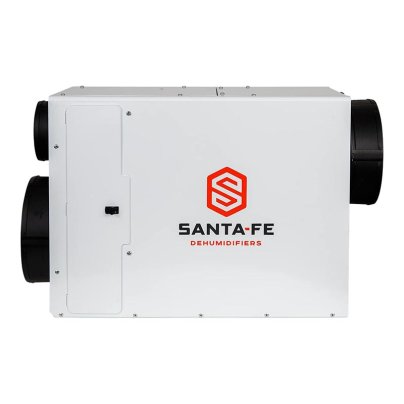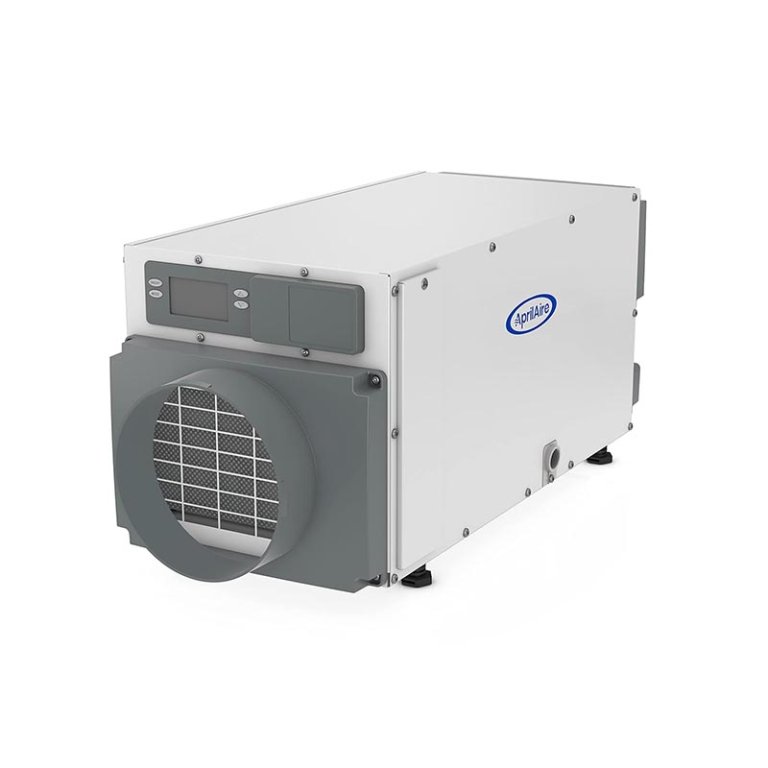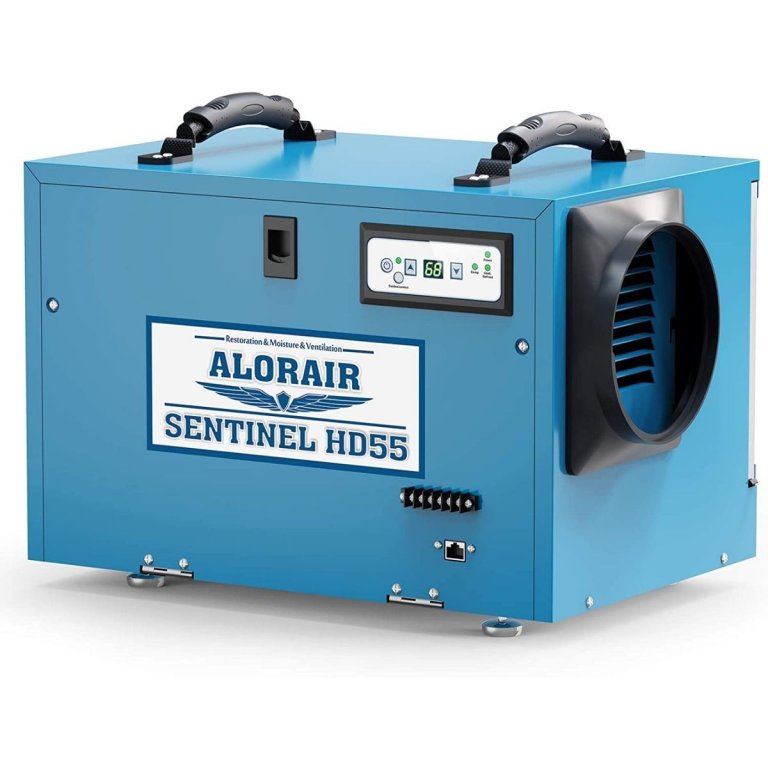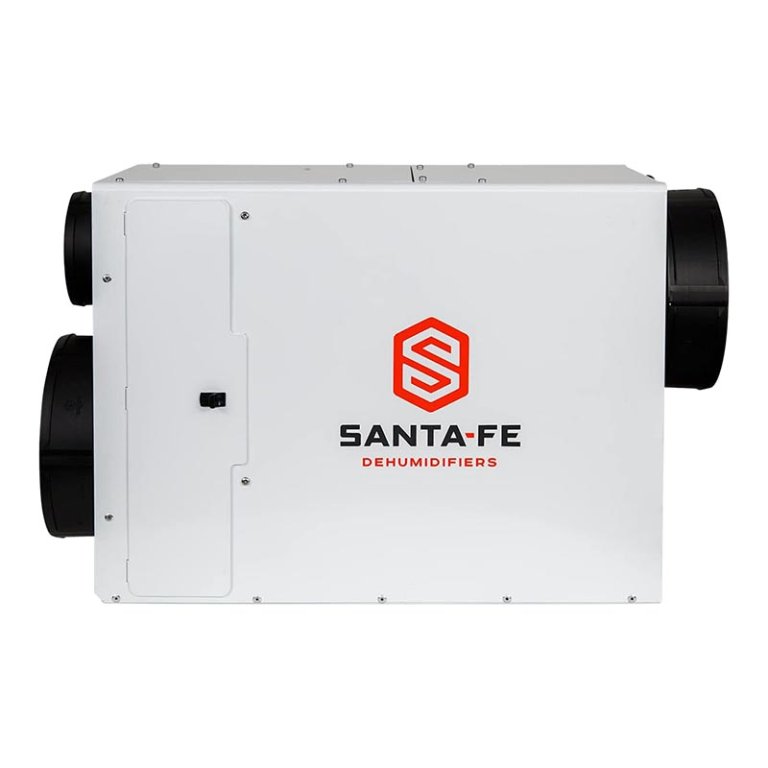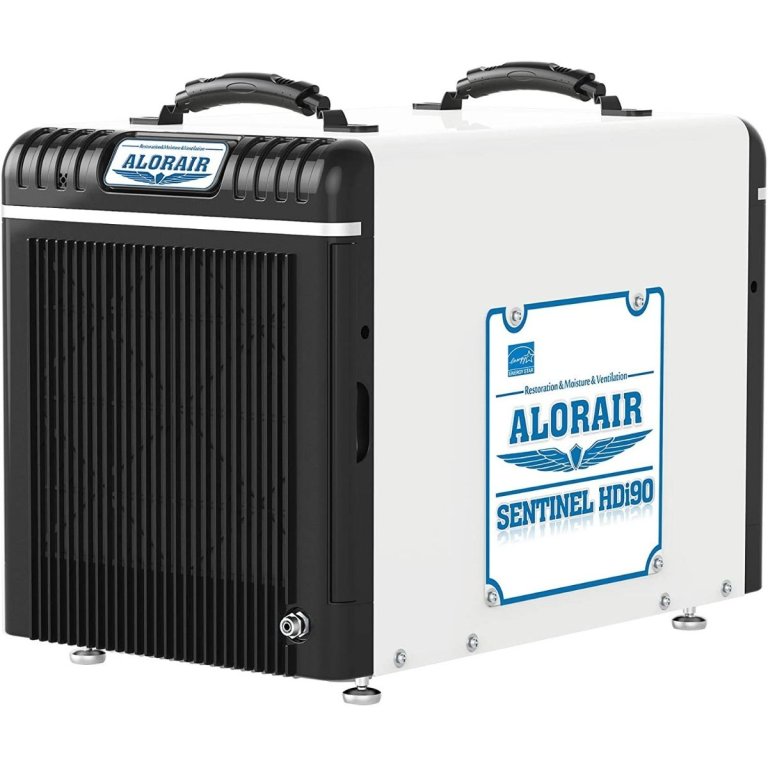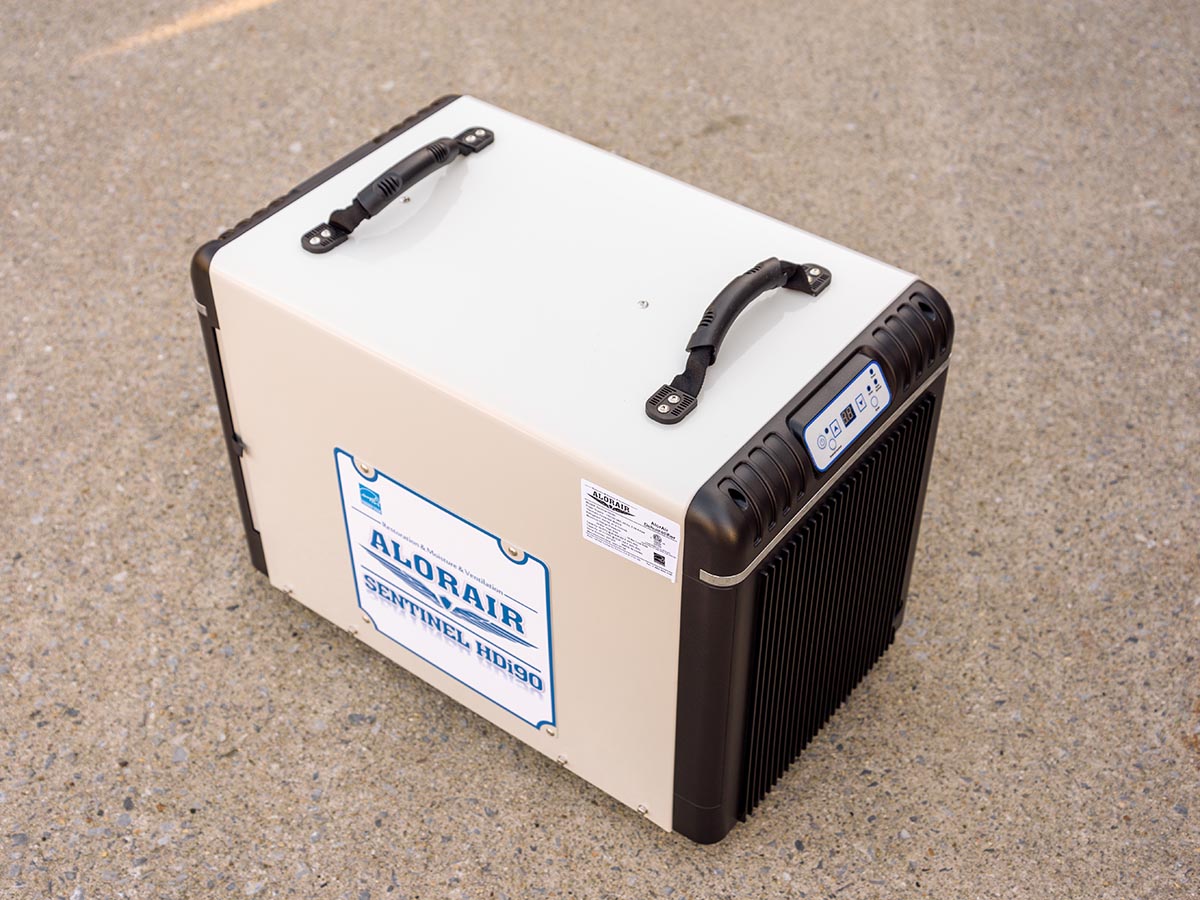
We may earn revenue from the products available on this page and participate in affiliate programs. Learn More ›
Crawl spaces are dark and dusty, and air quality isn’t always at its finest. If the humidity level climbs (which it often does) in a sealed crawl space, the excess moisture can cause mold, mildew, rot, and other issues that can adversely affect the health of a home.
Instead of letting crawl space flooding or moisture wreck your home, consider installing a crawl space dehumidifier. The machine draws in the humid air, removes the moisture, and sends the fresh, dry air back out.
We tested five dehumidifiers in a sealed basement crawl space to find the best crawl space dehumidifiers. While all of them proved effective, we discovered differences that make each suited for slightly different situations. We loved the AprilAire E070 70-Pint Crawl Space Dehumidifier for its 2,200-square-foot coverage area, 200 cubic feet per minute (CFM) airflow capacity, corrosion-resistant aluminum coils, and automatic operation for maintaining an ideal humidity range.
If you’re dealing with a damp crawl space, one of these options could be a good solution.
- BEST OVERALL: AprilAire E070 70-Pint Crawl Space Dehumidifier
↓ Jump to Review - BEST BANG FOR THE BUCK: AlorAir HD55 Basement/Crawl Space Dehumidifier
↓ Jump to Review - BEST FOR HVAC: Santa Fe Ultra98 Whole-House Ventilating Dehumidifier
↓ Jump to Review - BEST FOR LARGE SPACES: AlorAir HDi90 Basement/Crawl Space Dehumidifier
↓ Jump to Review - BEST FOR SMALL SPACES: AlorAir HD55S Basement/Crawl Space Dehumidifier
↓ Jump to Review
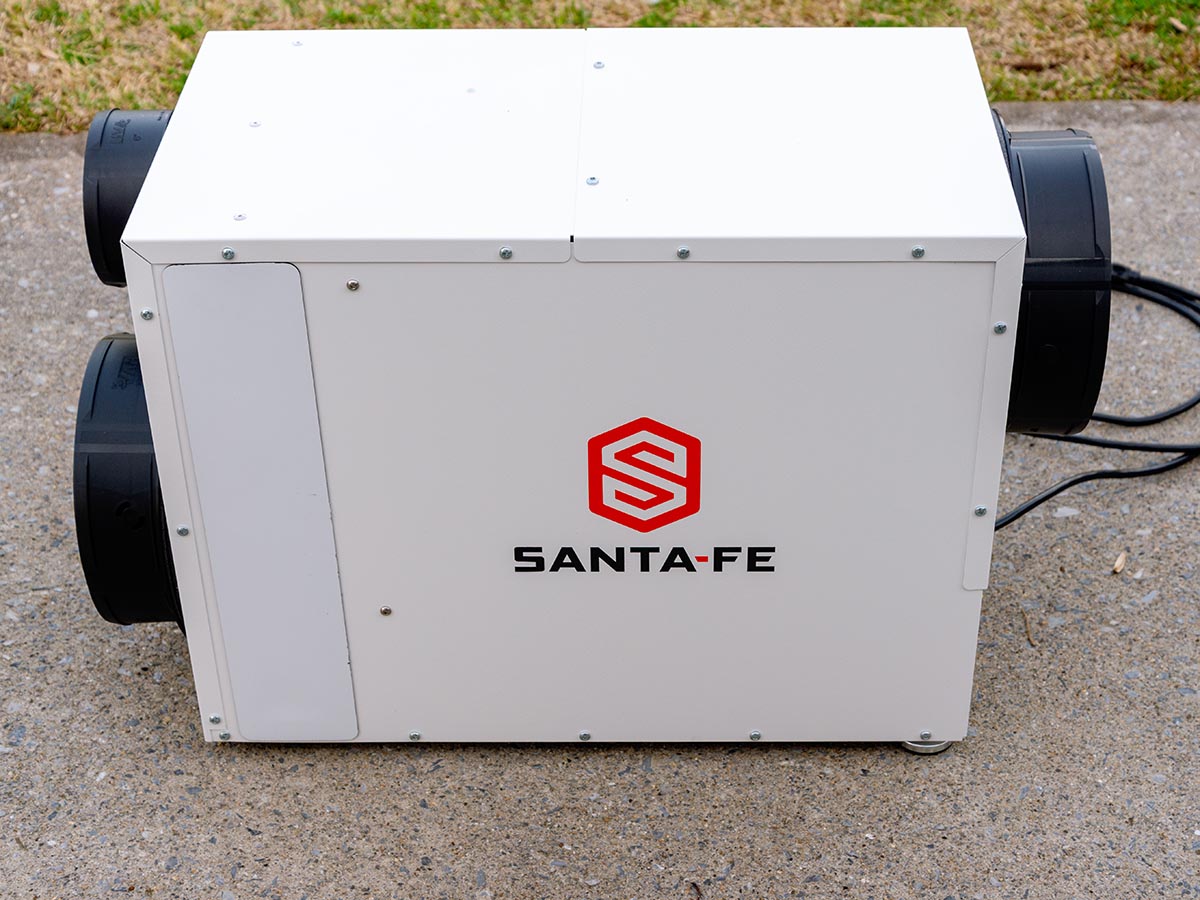
How We Tested the Best Crawl Space Dehumidifiers
For best results, and to save energy costs, you’ll want to prepare the crawl space before installing a dehumidifier. Install or replace the vapor barrier, or heavy-duty plastic liner covering the dirt floor, at a minimum. In regions with high humidity year-round, full encapsulation of the crawl space is an even better option.
The crawl space vapor barrier in our test home was only 2 years old and in good condition, so we could move onto the next step in preparing the crawl space. We created a level platform, ran an extension cord to power the test units, and extended a flexible drain hose from the platform to the sump pump. One by one, we installed each crawl space dehumidifier for a 5-day period, targeting a humidity level of 50 percent. We recorded temperature and humidity readings at 6-hour intervals during the first day of the test, and daily thereafter. We also noted the noise level inside the home during operation.
| Testing Stats | |
| Products tested | 5 |
| Time spent testing | 2 days per product |
| Tests performed | 5 |
| Price range | $590 to $2,000 |
Our Top Picks
Any of the crawl space dehumidifiers we tested could reduce the moisture level and musty smells inside a home. To make the best choice for your particular situation, be sure to check out the following reviews for sizing, control options, and other relevant details we noted during our hands-on testing.
Best Overall
AprilAire E070 70-Pint Crawl Space Dehumidifier
What We Like
- Built with corrosion-resistant aluminum coils for a longer operational life
- Right-size airflow and water removal capacity for larger crawl spaces
- Automatically starts operating when it senses the target humidity range
- Gravity drain system never needs to be manually emptied and will not break
What We Don’t Like
- Not equipped to pump condensate water to an elevated drain
- Larger and heavier build than some of the other models with similar capacity
Product Specs
- Coverage area: 2,200 square feet
- Airflow capacity: 200 CFM
- Pint capacity: 70 pints per day (PPD)
Our Ratings: Ease of Use 5/5; Noise 5/5; Effectiveness 5/5; Value 4/5
With the ability to remove up to 70 pints of water from the air per day, the AprilAire E070 is an ideal choice for dehumidifying sealed crawl spaces. Even in loosely sealed crawl spaces up to 1,800 square feet, it maintains the relative humidity within the ideal range of 40 to 60 percent. For easy control access, the E070 includes an onboard digital control near the air intake.
The large display and simple user interface make the E070 one of the easier models to set up and operate. Several additional features, including a washable air filter, gravity drain, and corrosion-resistant aluminum coils, help to ensure that this unit will deliver years of dependable service with easy maintenance. For safety and convenience, it includes automatic defrost, and it retains the most recent humidity setting after a power outage.
Our test installation of the E070 went smoothly. The setup instructions were easy to follow, so we had it up and running within 15 minutes. We attached 10-foot lengths of flexible air duct to the intake and outflow collars to maximize air moving efficiency. Within 12 hours, the humidity level dropped from 70 percent to 58 percent, and after 24 hours it was 49 percent. In the second 24 hours, readings held in the mid 40s, and the dehumidifier only ran intermittently.
The price of this unit was significantly higher than several others in our test group, but it also did a better job of both bringing down high humidity and holding the targeted setting. The noise during operation was not noticeable from the home’s main floor.
Get the AprilAire crawl space dehumidifier at Amazon or Sylvane.
Best Bang For The Buck
AlorAir HD55 Basement/Crawl Space Dehumidifier
What We Like
- Built-in filter; prolongs the life of the unit for long-term use and effectiveness
- Gravity-draining design provides user-friendliness during operation
- Automatic defrost setting prevents malfunction in colder climates
- Compatible with a remote control (sold separately) for easier operation in tight spaces
What We Don’t Like
- Removes moisture at a slower pace than other models once humidity is below 55 percent
Product Specs
- Coverage area: 1,200 square feet
- Airflow capacity: 120 CFM
- Pint capacity: 53 PPD
Our Ratings: Ease of Use 3.8/5; Noise 4/5; Effectiveness 3.8/5; Value 4.6/5
AlorAir’s HD55 commercial dehumidifier is worth checking out for anyone hunting for a medium-capacity unit to fix their crawl space moisture issues. This model features a 113 PPD capacity in saturation conditions and 53 PPD in Association of Home Appliance Manufacturers (AHAM) conditions, making it suitable for spaces up to 1,200 square feet (which includes most residential crawl spaces). It comes with a filter to prolong the life of the unit, which is easy to access from the side of the machine.
Besides its capacity, this gravity-draining unit has plenty of desirable features. Among those features are an automatic defrost setting to protect the coils from freezing and memory restart, allowing the unit to pick up where it left off after a power outage. The HD55 model is also compatible with a remote control for easy settings and readings, but it is a separate purchase.
We were pleased with the price, quiet operation, and how easy it was to set up the AlorAir HD55, but it was slightly less effective than our top performers as humidity approached the target range. Starting at 67 percent humidity, it reduced the reading to 59 percent in the first 12 hours. In the second 12 hours, it only came down to 53 percent. The slowdown, which occurred to a certain degree with all of the models tested, was partly because of the lower concentration of moisture in the air, and because the ambient temperature had cooled by 8 degrees Fahrenheit. A fully encapsulated crawl space would likely see faster results. Although it is labeled for 1,200 square feet, we would anticipate more favorable results in a smaller space.
Get the AlorAir HD55 crawl space dehumidifier at Amazon or AlorAir.
Best For Hvac
Santa Fe Ultra98 Whole-House Ventilating Dehumidifier
What We Like
- Efficiently dehumidifies a large volume of air, even in warm climates
- Works with the home HVAC system to maintain high-quality indoor air
- Can be configured for either horizontal or vertical discharge
- Operates about as quietly as a refrigerator at only 47.5 decibels
What We Don’t Like
- Complicated installation; ductwork must be reconfigured to accommodate the appliance
- Requires a control pad that is not included with the dehumidifier
Product Specs
- Coverage area: 2,300 square feet
- Airflow capacity: 320 CFM
- Pint capacity: 98 PPD
Our Ratings: Ease of Use 4/5; Noise 4.5/5; Effectiveness 5/5; Value 4/5
The Santa Fe Ultra98 offers more installation adaptability than any of the other crawl space dehumidifiers we tested. It is designed to provide dedicated moisture control, fresh air ventilation, and air filtration for the whole home. The compact, insulated horizontal cabinet keeps operational noise at a minimum, and it can be configured for either horizontal or vertical clean air discharge.
The Ultra98 works in tandem with the home HVAC system. For top efficiency, the air intake should be ducted to a dedicated indoor air return and the supply fitted to the main HVAC supply duct. Several alternative configurations are also possible. This can be an advanced DIY installation but should be done in consultation with an HVAC professional.
We liked that this unit treats a large volume of air, operates quietly, and helps the home HVAC perform better. We also liked that it has a secondary adjustable fresh air intake that can infuse filtered, oxygen-rich outdoor air into the home. In our tests, this model did an outstanding job of maintaining the target humidity, and it freshened the air at the same time. The build quality was extremely sturdy, and the unit operated at a very low noise level. The drawbacks were the complicated installation process, which took most of a day, and the added expense of purchasing the required control pad.
Get the Santa Fe crawl space dehumidifier at Amazon, SupplyHouse.com, or Sylvane.
Best For Large Spaces
AlorAir DHi90 Basement/Crawl Space Dehumidifier
What We Like
- Suitable for a large coverage area; can accommodate 2,600-square-foot spaces
- Condensate pump included to prevent malfunction; may require less crawl space dehumidifier maintenance
- Automatic restart after making adjustments or loss of power
- Provides easier crawl space dehumidifier installation compared to other models available
What We Don’t Like
- Remote control sold separately; may be tricky for some users to make adjustments by hand in tight spaces
Product Specs
- Coverage area: 2,600 square feet
- Airflow capacity: 210 CFM
- Pint capacity: 90 PPD
Our Ratings: Ease of Use 3.8/5; Noise 4/5; Effectiveness 4.6/5; Value 3.8/5
Large spaces with serious excess moisture issues might require a bit more power, and a heavy-duty upgrade unit like AlorAir’s basement/crawl space dehumidifier might be the way to go. This model features a 90 PPD capacity to cover spaces up to 2,600 square feet.
The AlorAir 198-PPD isn’t just capable of handling larger spaces; it also has convenience features like automatic defrost and compatibility with a remote control (though it’s a separate purchase). After a power outage, the automatic restart will kick on and begin dehumidifying without user input. Also, this unit comes with a condensate pump already installed, allowing users to remove water with ease, pumping the water away instead of relying solely on gravity. This makes for more versatility during crawl space dehumidifier installation.
The AlorAir 198-PPD dehumidifier decreased the humidity quickly and consistently in our tests. From a starting point of 65 percent, it ended the 24-hour test period at 49 percent humidity (and dropping). We noted the changes after 6 hours (56 percent), 12 hours (53 percent), and 18 hours (51 percent). This larger unit was a little more difficult to maneuver around in the close confines of the crawl space, but our prepared base and drain line made the process as smooth as possible. It would have been nice to have the remote monitoring and control system to keep an eye on progress, but even without it, the unit performed admirably.
Get the AlorAir HDi90 crawl space dehumidifier at Amazon or AlorAir.
Best For Small Spaces
AlorAir HD55S Basement/Crawl Space Dehumidifier
What We Like
- Energy Star certified for energy efficiency; saves money and energy
- Automatic defrost function prevents malfunction and requires little user maintenance
- Removable filter and gravity drain included for added user-friendliness
- Automatic restart in case of a power outage or while adjusting
What We Don’t Like
- Remote control sold separately; may be tricky for some users to adjust manually
Product Specs
- Coverage area: Up to 1,300 square feet
- Airflow capacity: 130 CFM
- Pint capacity: 55 PPD
Our Ratings: Ease of Use 3.8/5; Noise 4/5; Effectiveness 3.8/5; Value 5/5
For smaller crawl spaces, large units are a waste of money and energy consumption. In those smaller areas, a unit like this HD55S from AlorAir is worth checking out. This model features the capacity to remove up to 55 PPD AHAM from crawl spaces and other areas up to 1,300 square feet, with a maximum PPD in saturation of 120. This smaller dehumidifier for crawl spaces is also Energy Star certified, so it’s more affordable to run.
It also has plenty of appealing automatic features. An automatic defrost mode keeps the coils from freezing during colder weather, and a removable filter makes sure the coils stay clean. The AlorAir features a gravity drain as well as compatibility with a remote control for maximum convenience (though it is a separate purchase). Also, should the power go out, this unit will remember its settings and continue to dehumidify when the power comes back.
The AlorAir HD55S was value priced and did a great job under high humidity conditions in our test crawl space. It lowered the humidity reading from 66 percent to 55 percent in just under 18 hours. However, the drying rate slowed within the final 6 hours, with a final reading of 52 percent. In an encapsulated environment, we would anticipate faster and more consistent results from this Energy Star–certified dehumidifier, but it is probably best for smaller spaces if only a floor vapor barrier is in place.
Get the AlorAir HD55S crawl space dehumidifier at Amazon or AlorAir.
Jump to Our Top Picks
What to Consider When Choosing a Crawl Space Dehumidifier
No one wants mold or mildew growing under their feet, and the best crawl space dehumidifier will help ensure neither can thrive. While these dehumidifiers work very similarly to indoor and basement units, there are some differences and points to keep in mind when shopping for one. The following are some of the top considerations to think about.
Coverage Area
Choosing a properly sized dehumidifier is critical to ensure it’s able to handle the task at hand. If it’s too small, it won’t be able to remove humidity from an entire crawl space. If it’s too large, it’ll use more electricity than necessary and cost too much upfront. Here are some points to consider.
- Square footage: Most crawl space dehumidifiers clearly describe the amount of space they’re able to cover. They range from as low as a few hundred square feet to several thousand.
- PPD AHAM: Along with square footage, shoppers will notice a PPD AHAM value, which describes how many pints of water the dehumidifier can remove per day in a specific condition. These conditions are set by AHAM, and they’re 80 degrees Fahrenheit and 60 percent relative humidity.
- Saturation: Many dehumidifier manufacturers also describe how many pints their units can remove in saturated conditions. This value is often quite higher but lacks the same level of standardized testing as PPD AHAM.
Humidistat
Humidistats are an important feature to look for in the best crawl space dehumidifier. They allow the user to set the level of humidity for the dehumidifier to maintain. The unit will run when the humidity level climbs above the setting and shut off when the level drops below it. Why are they important? Consider these points:
- Even the best crawl space dehumidifier uses quite a bit of electricity. Allowing a unit to run constantly will make the power company very happy and your bank account less so. A humidistat will throttle the machine’s electrical output so it only runs when it needs to.
- Crawl spaces aren’t people-friendly places. They’re dark, dirty, and very tight. Heading under to check humidity levels and manually activating the dehumidifier would be a nightmare. The humidistat takes care of it for you.
Defrosting System
Crawl spaces are popular in many areas across the country, and many of those areas get very cold in the winter. Leaving a crawl space dehumidifier exposed to the elements can freeze the condensation coils and destroy the machine. For this reason, a defrosting system is essential.
The defrosting system maintains a warmer temperature within the dehumidifier. This prevents cold air from freezing the condensed water or coils, allowing the unit to run much longer. Even in areas where temperatures aren’t likely to freeze, it can be an important feature. In fact, it only takes one time for a freeze to break a coil.
Condensate Pumps
Like household dehumidifiers, crawl space dehumidifiers collect the water they remove from the air. Unlike household models, heading to the crawl space twice a day to remove a tank isn’t possible or practical. Instead, these models drain, but some models or scenarios require condensate pumps to work effectively.
Units equipped with condensate pumps push the water wherever it needs to go. Whether through a long run of hose or a drain that’s only accessible above the unit, a condensate pump will push the collected water out of the crawl space so you don’t have to crawl under and empty the tank.
Noise Level
The average home dehumidifier generates a noise similar to the hum of a window air conditioner, and the larger the capacity, the louder the device will be. Most small dehumidifiers produce between 30 decibels (comparable to a normal conversation) and 45 decibels (comparable to the hum of a refrigerator), but manufacturers aren’t required to list the noise levels on their units.
Reading customer reviews is the best way to determine how noisy a specific dehumidifier will be. But, be advised that placing the unit on a level and padded surface can also help reduce noise.
Cost and Energy Efficiency
Dehumidifiers can provide a continuous flow of fresh, dry air in your crawl space, resulting in an energy-efficient solution that improves the air quality and keeps mold growth at bay all season long. Small dehumidifiers that are suitable in crawl spaces will likely run on 280 to 300 watts of power, meaning that they will consume 4 to 5 cents of power per hour. Per year, if your dehumidifier is on for 9 to 10 hours per day, this equates to roughly $150.
However, Energy Star–certified dehumidifiers use about 15 percent less energy than conventional units. In the long run, that means a savings of approximately $175 over the life of a dehumidifier, not to mention avoiding ample greenhouse gas emissions.
Additional Features
There are a few other features that might make a particular model the best crawl space dehumidifier for your needs.
- Filtration: Many units feature filters that help collect dust and other particles, allowing the unit to last longer and the space underneath the home to stay fresher.
- Digital controls allow you to select the desired humidity level by percentages, such as 35 percent or 45 percent humidity. The unit will shut off automatically when the moisture in the room meets the preset level, and then turn back on as necessary.
- Memory or auto restart: Many of the most humid months bring thunderstorms with them, which often knock out the power. Some models with auto-restart or memory functions will remember their settings prior to the power outage and continue working where they left off.
- Timers allow you to program the dehumidifier to turn on and off automatically at a preset time, so you needn’t do so manually.
- Easy-carry collection tanks with comfortable handles and a well-designed spout let you dump water without spilling.
- Frost sensors detect frost buildup and turn the machine off to save energy. When a compressor unit runs for long periods of time, frost can develop on the coils, which reduces the dehumidifier’s effectiveness. While a unit with frost buildup will continue to run, it won’t remove moisture from the air as effectively. Some models also come with a restart feature that turns the unit back on after the coils have defrosted.
- Water level sensors alert you when the water level in your tank is approaching or has reached max capacity. Though most produce an auditory alarm, some models will also alert you via smartphone.
- Wheels are usually attached to portable units so you can move your dehumidifier with ease.
Installation
Before selecting a dehumidifier, it is important to measure your space to know which model will be most effective. It should also be placed where the airflow is not blocked and where the noise level can be heard the least. As some dehumidifiers also require draining, your model should be placed where it can be accessed as easily as possible.
While some models can be installed without professional help, other models that require connection to an HVAC system may require a contractor to install. If you do decide to install it yourself, you may require a drill or screwdriver, a hammer and nails, metal straps and PVC pipes, and/or rubber tubing depending on the model you choose.
FAQs
Even with the above extensive background on choosing the best dehumidifier for crawl space areas, there might be some additional questions that pop up. The following are answers to a collection of some of the most frequently asked questions about crawl space dehumidifiers.
Technically, you could, but they aren’t built for the rigors of crawl space life. Regular dehumidifiers’ coils aren’t durable, they rarely feature defrost functions, and most have tanks that require emptying. Also, crawl space dust is sure to limit an indoor unit’s lifespan.
As crawl spaces are likely to be very damp, a dehumidifier with a 50-pint tank or more is recommended to allow for ample drying.
You set a crawl space dehumidifier to a relative humidity level, not a temperature. As a general rule, keep that space within the ideal range of 40 to 55 percent humidity, so setting the unit to 50 percent should do the trick.
You’ll want to set up the dehumidifier in an area where it can draw in moist air and push out dry air without obstruction. It’s best to set it up in the center of the crawl space.
A right-size dehumidifier will reduce the humidity in a crawl space in 8 to 12 hours depending upon the size of the space and the current moisture levels.
Cleaning a dehumidifier should be relatively straightforward, most parts just needing to be wiped down with a damp cloth. It’s possible the reservoir may have a buildup of limescale, which can usually be removed with white vinegar or lemon juice. An air filter usually needs a quick rinse once a month. To ensure the longevity of your machine, it is vital that you follow the manufacturer’s instructions.
Dehumidifiers don’t require much maintenance other than cleaning or changing the filter every 6 to 12 months. If maintained properly, you can expect your dehumidifier to last around 5 years.
Meet the Tester
Mark Wolfe is a writer with an extensive background in the green industry and an avid DIYer who lives in a 50-year-old home. When he isn’t writing, he spends his time upgrading, repairing, and replacing anything and everything in his home, yard, and garden. He tests and writes reviews about hand tools, lawn care and home repair products, and outdoor living goods.
Additional research provided by Tom Scalisi.


